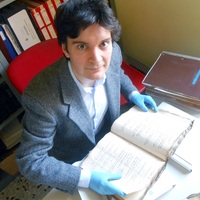In the eleventh century the Aosta Valley was first one of the political centres of the kingdom of Burgundy, then a contact area between the confl icting ambitions of the house of Savoy and the bishops of Aosta. This study examines the few... more
In the eleventh century the Aosta Valley was first one of the political centres of the kingdom of Burgundy, then a contact area between the confl icting ambitions of the house of Savoy and the bishops of Aosta. This study examines the few remains of manuscript production in the region along that century. The core of the investigation is a palaeographic and diplomatic analysis of the charta Augustana: an endemic documentary type which was written, in its latest form, both on the recto and the verso of the parchment sheet. Most of the studies relating to the Aostan scribes project on the first charters the juridical function and the writing practices mentioned in late medieval documents. This research, which also provides an edition of the eleventh-century chartae, reconstructs the early structure, functions and behaviours of the Aostan «chancery»: a fluid group, which had a close relationship with ecclesiastical institutions and the scriptorium. A comparative examination of chartae and books brings out several clues of a cultural renewal that involved the cathedral clergy by the mid-eleventh century. The survey is based on a continuous comparison with documentary and book production in other regions of the kingdom of Burgundy and of North-Western Italy.
